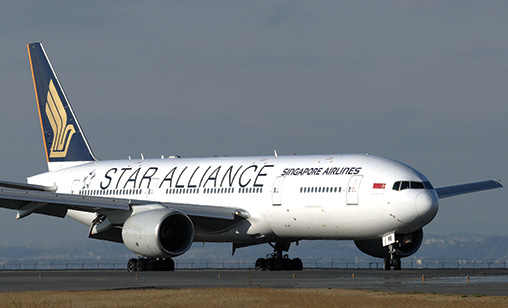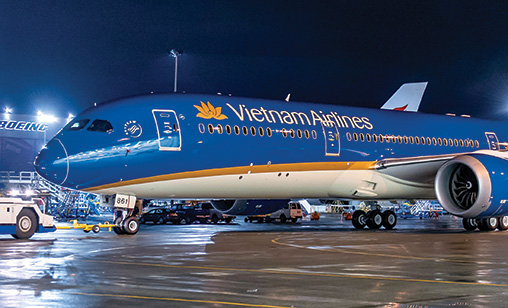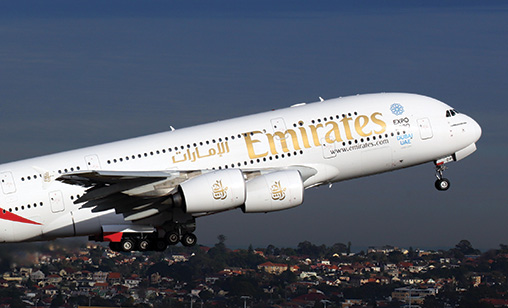Industry Insight Special Report
Onboard WiFi determines airline customer loyalty
Onboard WiFi has been a promise rather than a reality for many airline passengers. Poor reception, slow transmission speeds and unreliability are common complaints. But as WiFi becomes a given in an airline’s offerings, carriers are being forced to invest in entertainment systems that match passenger experiences on the ground.
April 1st 2017
The global inflight WiFi market is becoming crowded with new players and the reason is easy to explain. According to one research firm, Global Industry Analysts (GIA), the business is worth US$$1.85 billion. Read More » To prove how quickly it is growing, another consultancy, Persistence Market Research, said the sector could approach $5.5 billion in value by 2021.
Factors driving growth are increasing demand for connectivity on aircraft, rapid penetration of smartphones and other communication gadgets across all population demographics, the robust economies and new aviation sectors in developing regions, increasing Internet accessibility and inflight WiFi technological advances.
 |
Also passenger mobility, more personalization of services offered and increasing interest in WiFi services as a revenue stream for airlines are fueling growth in the market, GIA said.
Until 2014, North America accounted for more than 60% of the market, but the Asia-Pacific is catching up. By 2021, Inflight WiFi penetration in the region is forecast to expand by 26% per year to 2021 compared with the rest of the world, at 14.9%.
Onboard WiFi can now deliver the same service in the air that users experience on the ground. Major provider, Gogo, has taken the performance of its 2Ku in-flight broadband service to very high speeds.
Utilization of a “next-generation” modem and new Inmarsat satellites was trialled last year onboard a Gogo test aircraft. It allows passengers to stream video via the internet and also access live TV on Gogo TV.
“Our 2Ku technology is delivering industry leading performance. With the new modem and satellites, we are setting a very high bar for the industry,” said Gogo president and chief executive, Michael Smith.
“We will deliver this technology upgrade to our airline partners without taking aircraft out of service; a development that is incredibly important for their operations,” he said.
The new modem will begin installation onboard from July this year and eventually will be available on more than 1,500 2Ku aircraft at 13 airlines. Gogo works with several major carriers, including Asian carriers, Japan Airlines, Vietnam Airlines and Hainan Airlines.
The service is being rolled out on nine B787s and 18 A350s as they enter service at Vietnam Airlines.
But Gogo and Inmarsat don’t have the business to themselves. Major competitors are OnAir, Panasonic Avionics, Rockwell Collins, EMS Aviation, SITA, AeroMobile Communication, Row44 Inc.,Thales Group and Honeywell International
| 'At airlines there is a never ending debate about the charges they strike for WiFi - or if they should charge at all. Fees for inflight WiFi range from $5-$15 per day or $30-50 per month on appropriately equipped aircraft' |
Most Asia-Pacific airlines either offer some form of onboard WiFi or are in the process of introducing the service on their aircraft.
Singapore Airlines (SIA), which is widely respected for its leadership in inflight service innovation, launched a $50 million inflight connectivity program in 2012 to bring Internet and mobile data services to passengers, when flying at 35,000ft.
Its low-cost, long-haul subsidiary, Scoot, makes onboard WiFi available across its entire fleet of B787s. It launched a low-cost inflight WiFi plan, “Social-Lite”, last May, which allows guests to stay connected with friends, families and co-workers as they travel.
Optimized for messaging and chat services as well as light surfing, “Social-Lite” costs US$5 for 20MB of data at 64kbps surfing speed. It complements Scoot’s existing inflight WiFi plan, which costs US$11.95 for 60 minutes, $16.95 for three hours and $21.95 for a one day and night cycle. There is no cap on data consumed.
Panasonic Avionics Corporation vice president Global Communications Services, David Bruner, the supplier of the Scoot service said: “Working with Scoot, we’ve changed the game in inflight connectivity to give guests more choices. They can opt for a broadband experience or pay less for quick texting or light email services to friends or loved ones on the ground.”
Philippine Airlines offers its passengers GSM and WiFi Internet supplied by OnAir. China’s largest carriers, China Eastern Airlines, China Southern Airlines and Air China, received regulatory approval to install onboard WiFi on their fleets in 2015. The first of the “Big Three” to capitalize on the go ahead was China Eastern. Initially the Shanghai carrier was permitted to use the AsiaSat-6 satellite for WiFi services on 21 aircraft. This year, 70 of its aircraft are equipped with the IFE technology.
Given the controls imposed on the Internet by the Chinese government, WiFi was available as intranet rather than internet, which prevented passengers from emailing, web surfing or micro blogging to the ground. Passengers had to be content to connect to a local network to watch movies, listen to music or read information.
 |
But this is changing. In March, Guangzhou-based China Southern completed tests of inflight WiFi onboard on flights between Guangzhou and Beijing, Sydney and Melbourne, and between Beijing and Amsterdam. China Southern Airlines will gradually expand this service to more routes.
Some airlines have been reluctant to roll out full onboard WiFi until they know what their customers want. Cathay Pacific Airways has installed WiFi on its new fleet of A350s but not on the rest of its fleet. “It is the company’s intent to extend air-to-ground WiFi internet connections to other fleet types besides the A350. We are in the process of assessing various technological options and commercial viability,” said a Cathay Pacific Airways spokesperson.
In February, Qantas announced that passengers on its WiFi enabled domestic flights would be able to watch their favourite shows, avoid missing live sport and listen to almost any song they like with Foxtel, Netflix and Spotify coming on board this year.
Qantas said the service is ten times faster than conventional inflight WiFi. Its domestic fleet of B737s and A330s will be progressively equipped with the expanded IFE options from mid year.
The airline said the faster connection speeds needed for streaming are being made possible by the National Broadcasting Network (NBN) Sky Muster™ satellite service. The service uses idle data capacity, with the signal reaching the aircraft as it flies through the satellite’s 101 spot beams across Australia.
Qantas is in talks with suppliers to extend WiFi services to its international and regional (QantasLink) fleets, but the product must overcome technical, performance and coverage challenges, particularly delivery of WiFi over large stretches of water.
At airlines there is a never ending debate about the charges they strike for WiFi or if they should charge at all. Fees for inflight WiFi range from $5-$15 per day or $30-50 per month on appropriately equipped aircraft.
 |
Gogo packages are available for direct purchase via gogoair.com at $12.70 for 24 hours of inflight internet access, $34.95 for monthly unlimited access on a single airline or $39.95 for monthly unlimited access on any Gogo partner airline.
OnAir offers Wi-Fi services on Emirates Airline’s A380s and charges $7.50 for a mobile device and $15 for a laptop. Qatar Airways bills passengers at international mobile phone roaming rates when they are using the Mobile OnAir service. Some airlines equip their business class cabions with complimentary WiFi, a service not extended to the economy cabin.
There is a view that Wifi onboard will become a free service, matching the benefits customers receive on the ground at restaurants, shopping malls and airports. The determining factor, as always, will be competition.
When some airlines switch to free WiFi, other carriers will be forced to follow. It is expensive to set up the hardware needed to provide WiFi across a fleet, but there have been studies - mainly in the U.S. – that say travelers will not book on an airline if it does not have onboard WiFi and internet availability. That trend is bound to be the same in the tech savvy Asia-Pacific. So failing to install onboard WiFi, free or not, could be a false economy. Penny pinching on WiFi could damage an airline’s brand.